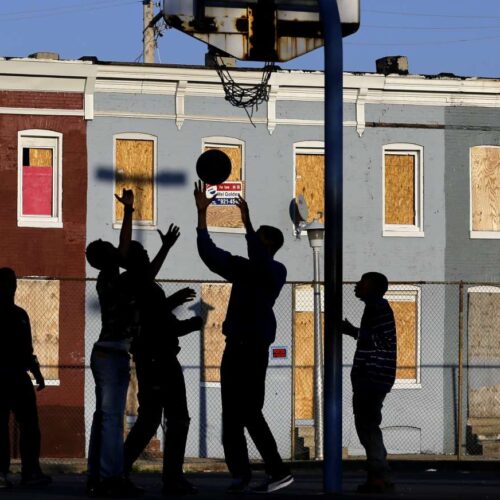Introduction
High school graduation rates are at a historic high and health insurance coverage for kids has improved. But the percentage of American children living in high-poverty neighborhoods is the highest since 1990, according to the 2015 “Kids Count” annual report by the Annie E. Casey Foundation.
The Foundation, which is devoted to improving conditions for children, found that 1.7 million additional children are living in lower-income working families than during the midst of the 2008-2010 Great Recession. Much of the latest data analyzed in the report, state by state, is from 2013.
The group’s report also says that in 1990 about 11 percent of children lived in concentrated poverty areas; that percentage dropped to 9 percent in 2000, but rose again to 14 percent in 2013, an increase that quickened with the recession.
“After numerous years of depressing economic news, many positive trends signal that the economy is finally recovering from the deep recession,” says the report, which was released on Tuesday. “Nonetheless, there are warning signs that the recovery may be leaving the lowest-income families behind, disproportionately affecting workers of color and their children.”
“When very young children experience poverty,” the report adds, “particularly if that poverty is deep and persistent, they are at high risk of encountering difficulties later in life.”
Researchers also found a notable regional shift among states rated as best in overall ranking for children. Minnesota, for example, ranked first in the overall measurement followed by New Hampshire and Massachusetts.
“Minnesota’s number one ranking marks the first time in nearly a decade that a New England state did not hold the top spot for child well-being in our report,” according to the foundation. “The three lowest-ranked states were Louisiana, New Mexico and Mississippi.”
In 2012, the report notes, national data showed that 81 percent of high school students graduated on time, which is an “all-time high”; that was the latest year of data available for the graduation rate. More children are attending preschool today than 10 years ago, but the most recent data showed a slight drop in enrollment.
And even though the country experienced a decline in employer-sponsored health insurance coverage during a seven-year stretch, more children had medical coverage in 2013 than before the Great Recession. Without specifically identifying programs, the report attributed an increase in coverage to “public health insurance” policies that have grown over the last decade.
The Annie E. Casey Foundation has been a supporter of the Center for Public Integrity.
Read more in Education
Juvenile Justice
Kayleb returned to court as schools alter discipline policies
12-year-old’s fate still unclear, but attention to his case has sparked reform
Juvenile Justice
Virginia pursuing school policing reforms following Center probe
State, county officials examining changes that would keep kids out of criminal justice system


Join the conversation
Show Comments